In addition to online tutorials and books, please check for in-person training opportunities here: https://ioccg.org/what-we-do/training-and-education/
ONLINE TRAINING: INTRODUCTORY
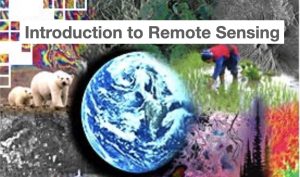
Introduction to Remote Sensing (Natural Resources Canada)
Fundamentals of Remote Sensing (NASA Applied Remote Sensing Training, ARSET)
Monitoring the Oceans from Space: EUMETSAT Massive Open Online Course (MOOC) providing an introduction to Earth observation satellite data, its uses, how it is acquired, and the range of data types available.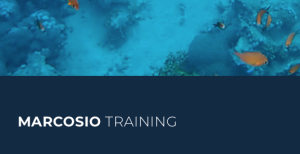
Earth Observation of the Oceans Introductory Lectures on (MarCOSIO)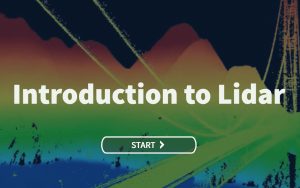
Introduction to Lidar (NOAA)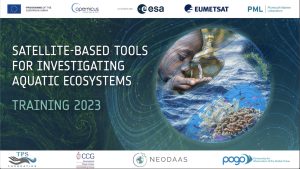
Satellite-based tools for investigating aquatic ecosystems online training course, 2023.
ONLINE TRAINING: ADVANCED
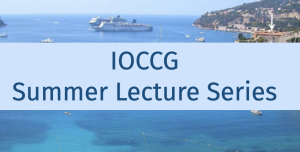
IOCCG Summer Lecture Series: Fundamentals of ocean optics and ocean colour science (2012-2024)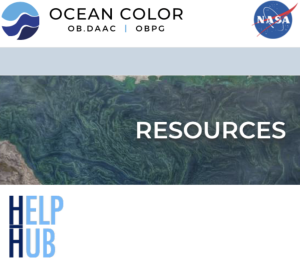
NASA Tutorials on The Help Hub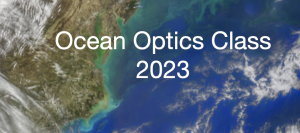
2023 Ocean Optics class on Calibration & Validation for Ocean Color Remote Sensing (Bowdoin College’s Schiller Coastal Studies Center)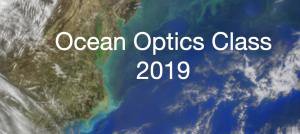
2019 Ocean Optics Class – University of Maine’s Darling Marine Center). See schedule for links to PowerPoint slides.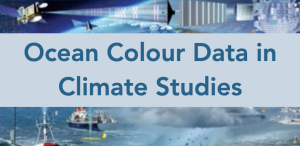
Ocean-colour data for climate studies: (Plymouth Marine Lab, September 2017)
BOOKS
- The Oceanic Optics Book – Curtis D. Mobley (2022)
A community resource on ocean optics, with 16 chapters covering the foundations of optical oceanography and ocean color remote sensing, including radiometry, inherent and apparent optical properties, absorption, elastic and inelastic scattering, atmospheric correction, radiative transfer theory, Maxwell’s equations, and Mie theory, and 7 appendices covering advanced topics on modeling sea surfaces using Fourier transform techniques, wave variance spectra and autocovariance functions; Monte Carlo simulation; and prediction of image appearance through absorbing and scattering media. Theoretical concepts are illustrated with measured data, and via numerical simulations. - Physical Principles of Ocean Color Remote Sensing – Howard R. Gordon (2019)
This book provides the physics underlying the methods of ocean color remote sensing. It is intended to be a resource for students and researchers wanting to understand on a basic level the remote sensing signal and its relationship with the constituents in the water, as well as the technical aspects of acquiring, calibrating, and validating ocean color imagery. Topics covered include radiometry and radiative transfer, scattering theory, inherent and apparent optical properties of the atmosphere and natural waters, and ocean color remote sensing systems, along with their vicarious calibration and validation. - Ocean Optics Web Book: Initial content by Curtis Mobley, Emmanuel Boss and Collin Roesler.
A freely-accessible, web-based, dynamically growing, community resource, that addresses both the education and reference needs of the broad optical oceanography and ocean colour remote sensing communities. - Handbook of Satellite Remote Sensing Image Interpretation: Applications for Marine Living Resources Conservation and Management EU PRESPO and IOCCG (2011)
PRACTICALS
- Building Intuition for In-Water Optics and Ocean Color Remote Sensing: Spectrophotometer Activity with little Bits™ (S. Schollaert Uz, 2016) and accompanying NASA brochure with worksheet.
- Teachable Optics – Absorption, Scattering and the Color of the Ocean by Emmanuel Boss.
- Optics-Related Marine Data Literacy (MDL) Exercises (Optics/Pigments): Practical demonstration of how you can find, download, manage and visualize various optics-related data products.
PODCASTS
- Actually it’s Phytoplankton! Ocean Ecology and NASA’s PACE Mission – science and oceanography podcasts especially designed for middle-schoolers.
TEACHING RESOURCES
- Resources for Teachers Material on oceans, ocean-colour and remote sensing of ocean colour (SeaWiFS website)

 The sixth International Ocean Colour Science (IOCS) meeting will take place in Darmstadt, Germany from 1 – 4 December 2025, hosted by EUMETSAT and ESA with support from other agencies.
The sixth International Ocean Colour Science (IOCS) meeting will take place in Darmstadt, Germany from 1 – 4 December 2025, hosted by EUMETSAT and ESA with support from other agencies.